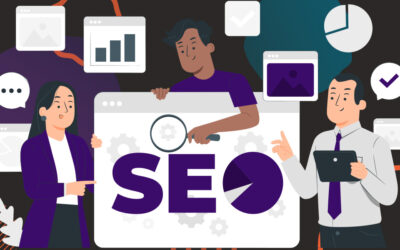Whether you are selling a product or providing a service, one fact remains the same, you need an audience of engaged customers in order to be successful and turn a profit. However, the majority of those customers need wooing, engaging, and attending to before they choose your brand over all others. That means you need a strong customer acquisition strategy.
Acquiring customers is essentially the same as starting a new relationship, you need to introduce yourself, be charming, helpful and interesting, be there for them when they need you and gradually work up to a fully-fledged, hopefully long term, relationship. If you make it to this stage, what began as that new customer has now become something far more valuable to you, a loyal, returning customer.
So here is our relationship advice or rather, our guide to building a successful customer acquisition strategy.
Are you ready for Commitment?
While embarking on a customer acquisition strategy is something every brand will need to do at some stage, it’s important not to jump into the pool too soon, especially if you’re a new, start-up business. You want to present the best version of yourself when you put yourself on the market, so you need to be sure you’ve got there first and that your products, services and systems are ready.
The likelihood is you will have already invested huge amounts of time developing your product/services and you don’t want to alienate potential customers by presenting them with something that is inferior, while you may eventually win some of these people back, some will be lost to you forever.
So first things first, you must establish the baseline product or service which you are willing to release to customers. Then you must establish whether you’re ready to share it with potential customers. Luckily, there are several questions you can ask yourself to work our whether or not you’re ready to commit to acquiring new customers and putting yourselves on the market:
- Are the product/services ready?
- Are there any user experience bugs to address?
- Can your servers handle high activity?
- Do you have a customer support network set up?
- Will potential customers actually understand your product/service?
If you don’t have clear answers to the basic questions above, you’re probably not ready to embark on your user acquisition strategy, if you’re unsure about some of the answers, then you may want to consider either a soft launch or a private beta test.
Getting Ready
If you’re sure you are ready for customer acquisition, then it’s time to start seriously planning that strategy. While the original plan will inevitably change once it’s put in to practice, it is still important to begin with a thoughtful proposal because it will give you the necessary direction to get started and help you measure the progress you begin to make. Your customer acquisition plan essentially knows where you want to go and if you’re getting there. With that in mind, it should establish things like timelines, goals, costs and staffing.
Timelines
Goals: identifying your goals helps you focus on what you need to achieve with your customer acquisition strategy, but they also dictate which analytics you need to take note of and what data needs monitoring, because you can’t analyse everything! A word of warning here is to beware of ‘vanity metrics’ such as number of Facebook fans, and instead focus on more meaningful analytics such as engagement metrics
Cost: You should at least have an idea of what your cost to acquire new customers is going to be, to avoid any potentially nasty shocks in the future. Thankfully it’s a straightforward calculation: the cost of all your sales and marketing costs over a set period of time, divided by the number of customer acquisitions acquired in that same period.
Staffing: It’s important everyone involved in your team understands your customer acquisition strategy and what their roles within that strategy are. Customer acquisition cannot operate in isolation: you need developers and designers to respond to user experience problems and marketing and sales teams to promote your brand, as well as responding to customer queries and complaints across various channels.
Instagram and Pinterest are two brands that have demonstrated impressive customer acquisition over recent years, and while there are most definitely other factors that contributed to their respective successes, customer acquisition certainly played its role. You can lean a lot from both these companies whether you take on Instagram’s focus on community over monetization or Pinterest’s commitment to creating a strong emotional bond with users.
Know Who You’re Looking For
Once you decide to go to market and implement your user acquisition strategy it’s important you keep in mind who your existing customers are and equally who your target customers are. Knowing you existing audience identifies your current starting point and position in the marketplace, this knowledge allows you to project realistic goals and define some of the parameters needed for calculating your costs.
Analytics tools and social media are invaluable tools for helping you identify the key characteristics of your existing audience: social media pages allow you to browse your followers’ profiles, tweets, posts, active times and who they follow; analytics can crunch the numbers for you. In combination, analytics and social media provide both qualitative and quantitative insights in to your existing audience.
Your target audience is a little harder to understand, first thing you need to do, is “fish where the fish are” as KISSmetrics say, in other words, you need to search for the relevant channels and platforms for connecting you to your potential customers. The best way to do this is to come up with a profile of your ideal user covering things like: age, gender, interests, lifestyle etc. This is useful because for one thing: certain characteristics favour specific social media sites:
- 59% of Twitter users have visited B2B tech brand sites, compared to 40% for the average internet population. (Source: Compete and Twitter)
- The fastest growing demographic on Twitter is the 55 to 64 age bracket. (Business Insider)
- 80% of Pinterest users are female and 50% of Pinterest users have children. (Huffington Post)
For another thing, you can then conduct research into real people similar to your ideal customer and find out where they live online, what they search for on Google, what they talk about on social media and what they like on Facebook. Armed with the answers to these questions you can begin designing content, branding and marketing that is more likely to appeal to them.
Making a Good First Impression
Once you’ve established where you can connect with your target customers you need to make sure you have a great landing page on your website which you can then direct them to, leading them one step closer to becoming one of your valuable customers. This is where you make a real first impression and although all landing pages are unique to their specific purpose, there are a few general factors to do and do well:
- Use an interesting visual aid be it an image, video or photograph. (Demo videos in particular can increase conversion by between 10 and 20% – Switch Video)
- Have an attention grabbing headline
- Strong emphasis on the benefits of choosing you
- Social evidence or an endorsement of your brand, services or product
- An epic call to action
- Use directional cues to keep people moving in the direction you want
- Make the next step as obvious as possible by avoiding outbound links and multiple options
- Use numbered lists
- Get your keywords for search engine optimisation (SEO) into your copy to boost organic search.
- Above all, keep it simple.
When it comes to that all important call to action, you need to ensure it is above the fold so visitors can see it straight away when they land on your site.

It should also be as descriptive as possible so people know exactly what you want from them, what you will give them in return and above all else, what the next step is, in other words, don’t be generic. Similarly, if you are collecting personal details as part of your call to action then make it as easy as possible; only ask for what you absolutely need keeping the whole process short and sweet. Part of ensuring you call to action is as simple as possible lies in the design, so make all clickable icons big and bright and if your landing page is a long one, considering repeating your call to action further down the page to enhance your chances of capturing leads.
A word of warning, your calls to action and the landing pages you place them on are highly unlike to be right first time, so don’t rest on your laurels and test, test, test. Statistics report that the slightest tweak could result in up to a 30% increase in conversions (KISSmetrics), whether it’s changing the button colour or rewording the text. There are a few different ways to test your landing pages: multivariate testing or A/B testing. A/B testing is more accurate but is therefore more time consuming so good practice would be to start with multivariate testing to eliminate a few options and then use A/B testing to isolate cause and effects. Testing should be a constantly on-going part of your user acquisition strategy.
Keeping Things Going
Social media is key to keeping your relationships with existing and potential customers going, by creating a so called “viral loop” (KISSmetrics). By making it as easy as possible for people to share their interactions with your brand, whether that’s through pre-written tweets explaining they just signed up to your newsletter or just a simple page like, it all serves to build a viral loop keeping people interacting and engaging with you. Dropbox is an excellent example of a company using social media to build a viral loop.
Social media is also an invaluable tool for further promoting your content marketing, which is an activity your marketing team should be doing, ALL THE TIME. It’s the spam free way to move social traffic towards your website, but it has to be high quality content. This is where you need to engage, entertain and interest your audiences and even be helpful and useful to them by identifying their paint points and problems and solving them for them. In time these activities will effectively charm potential customers into becoming actual customers so spend time on establishing your blog.
Building a blog is a long term commitment, but there are tools to help you do it better such as the SEO plugin from Yoast, which we use ourselves at Maratopia to ensure all our content is search engine friendly and most of all searchable and findable. Get a publishing schedule together and plan the content you are hoping to cover and when, recruit writers and guest bloggers as well as your own staff too to diversify the blog content and finally, make sure someone is on hand to drive all your blog content to social media.

Top Tip: all your social media activity should be working towards driving customers to your bespoke landing page and new content; so just as your landing page has a great call to action, so should all your new content!
Sealing the Deal
While a strong social media presence and great quality content production and marketing are the bread and butter of a good customer acquisition strategy, there are a few optional additions you can throw in to your strategy to make it that bit more effective.
For one thing, you might like to use a little outbound marketing to attract new customers on top of all your inbound marketing activities, especially if you’re working in an industry that thrives on advertising. A popular method of outbound marketing is running pay per click (PPC) campaign for which we recommend using Google’s Adwords. Adwords offers the options of running either search ads (appear beside Google Search Results) or display ads (otherwise known as banner advertising), so you can keep things diverse. PPC is especially beneficial for search engine optimization strategies as well as marketing and customer acquisition too, so make the most of your investment in PPC and approach it with a strong, strategic keyword plan.
You can also indulge in a little outbound marketing through your Facebook page to either promote that Facebook page or landing pages on your website depending on your goals and objectives.
Email marketing is another excellent tool to have in your customer acquisition strategy, it’s benefits are twofold, it’s ideal for reaching out to potential customers with news of sales, promotions and news to spark an initial interest in your brand and it’s great for retaining customers. Emails can aid customer retention by simple keeping in touch and up to date with your audience by sending them relevant reminders and a company update every now and then.
Long Term Happiness
Clearly there are a number of ways to go about acquiring new customers, but one thing is a definite, if you look to engage your audiences you need to: treat them well, provide a strong product or service and endeavour to keep in touch with the people you value, and then they will reward you with their business. We hope the take away points from our guide on developing your customer acquisition strategy will be to focus on quality content, usability testing and audience awareness.







